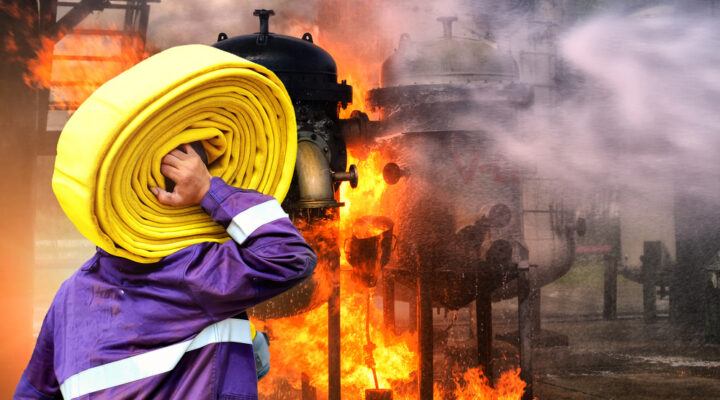Occupational and Physical Therapists play a large role in helping Injured Workers recover from their industrial injuries. In doing so, however, Occupational and Physical Therapists may be placing themselves at risk for sustaining a work injury. More specifically, both Occupational and Physical Therapist’s work activities can place them at risk for sustaining musculoskeletal disorders. These musculoskeletal disorders can include back problems, shoulder problems, and wrist problems.
The article will discuss Occupational and Physical Therapists, what activities they perform on the job that may be injurious to them, and the rates of injuries that occur for Occupational and Physical Therapists.
What is an Occupational Therapist (OT)?
Per the American Occupational Therapy Association, “occupational therapists …help people… participate in the things they want and need to do through the therapeutic use of everyday activities (occupations.)”
OT Programs can include “an individualized evaluation, during which the client/family and occupational therapist determine the person’s goals, [a] customized intervention to improve the person’s ability to perform daily activities and reach the goals, and an outcomes evaluation to ensure that the goals are being met and/or make changes to the intervention plan.”
What is a Physical Therapist (PT)?
Per the American Physical Therapy Association, “[p]hysical therapists are movement experts who improve quality of life through prescribed exercise, hands-on care, and patient education.”
“Physical therapists examine each person and then develops a treatment plan to improve their ability to move, reduce or manage pain, restore function, and prevent disability.”
What is the Difference Between an Occupational and Physical Therapists?
The Occupational Therapist focuses on the patient’s ability to perform work-related functions. The Physical Therapist focuses on physical activities in general.
What Are The Work Activities That Are Injurious to OTs and PTs?
Transfers/Lifts and manual therapy have been found to be associated with musculoskeletal disorders. “Darragh AR, Campo M, King P. Work-related activities associated with injury in occupational and physical therapists. Work. 2012;42(3):373-84. doi: 10.3233/WOR-2012-1430. PMID: 22523031; PMCID: PMC3839086. These activities have been found to impact the lumbar spine. Supra.
Patient handling activities include (transfers, repositioning and patient lifting. Supra.
Manual therapy includes soft tissue work, joint mobilization, and orthopedic techniques. Supra.
Manual Therapy was found also found as a risk factor consistent risk factor for both injuries as well as gradual onset of WSMDs. Supra. In workers’ compensation terms, this would be considered as a cumulative trauma injury.
With Respect to Musculoskeletal Disorders? Is There Any Difference Between OTs and PTs?
No. “Occupational (OTs) and physical therapists (PTs) have substantial and similar rates of work-related injury (WRI), musculoskeletal pain and musculoskeletal disorders (WMSD)” Darragh AR, Campo M, King P. Work-related activities associated with injury in occupational and physical therapists. Work. 2012;42(3):373-84. doi: 10.3233/WOR-2012-1430. PMID: 22523031; PMCID: PMC3839086.
“Darragh et al. reported an annual WRI incidence rate among OTs and PTs of 16.5 and 16.9 per 100 full-time workers, respectively.” Darragh AR, Campo M, King P. Work-related activities associated with injury in occupational and physical therapists. Work. 2012;42(3):373-84. doi: 10.3233/WOR-2012-1430. PMID: 22523031; PMCID: PMC3839086.
What Are Injury Rates for Activities? What Do Therapists Think Are the Causes of Their Injuries?
“Manual therapy and transfers/lifts accounted for more than half of all injuries (54.0%), across all practice areas.” Supra. “Manual therapy was the greatest proportion of injuries to the wrist and hand (69.1%).” Supra. “Transfer and lifting activities were associated with 26.6% of injuries Over half of these injuries were to the low back (53.0%), followed by the shoulder (19.7%) and the head/neck (18.2%).” Supra. “Other activities associated with injury included environmental and equipment interactions (10.9%), multiple activities (6.5%) and patient falls (5.7%)”
What Do Therapists Think of How They Get Hurt?
Therapists opine that force, awkward posture, repetitive motion, sustained posture, and fatigue were factors contributing to those type of injuries. Supra.
For wrist and hand injuries, therapists opine that repetitive motion (experienced during joint mobilizations and range of motion activities), force (experienced during range of motion, soft tissue work, and joint mobilizations), awkward posture and sustained posture were factors contributing to those type of injuries. Supra.
For transfer and lifting activities, opined that “these injuries occurred both gradually because of repeated performance of transfers over time and more suddenly when a patient behaved in an unexpected way (grabbed the therapist, stumbled, or moved in an unexpected direction.) The majority of therapist identified force (72.7%;48/66), including overexertion and lifting, and awkward posture (54.5%; 36/66) as the primary contributing factors to their transfer injuries.” Supra.
What if I Need Advice?
If you would like a free consultation regarding workers’ compensation, please contact the Law Offices of Edward J. Singer, a Professional Law Corporation. We have been helping people in Central and Southern California deal with their workers’ compensation cases for 27 years. Contact us today for more information.

